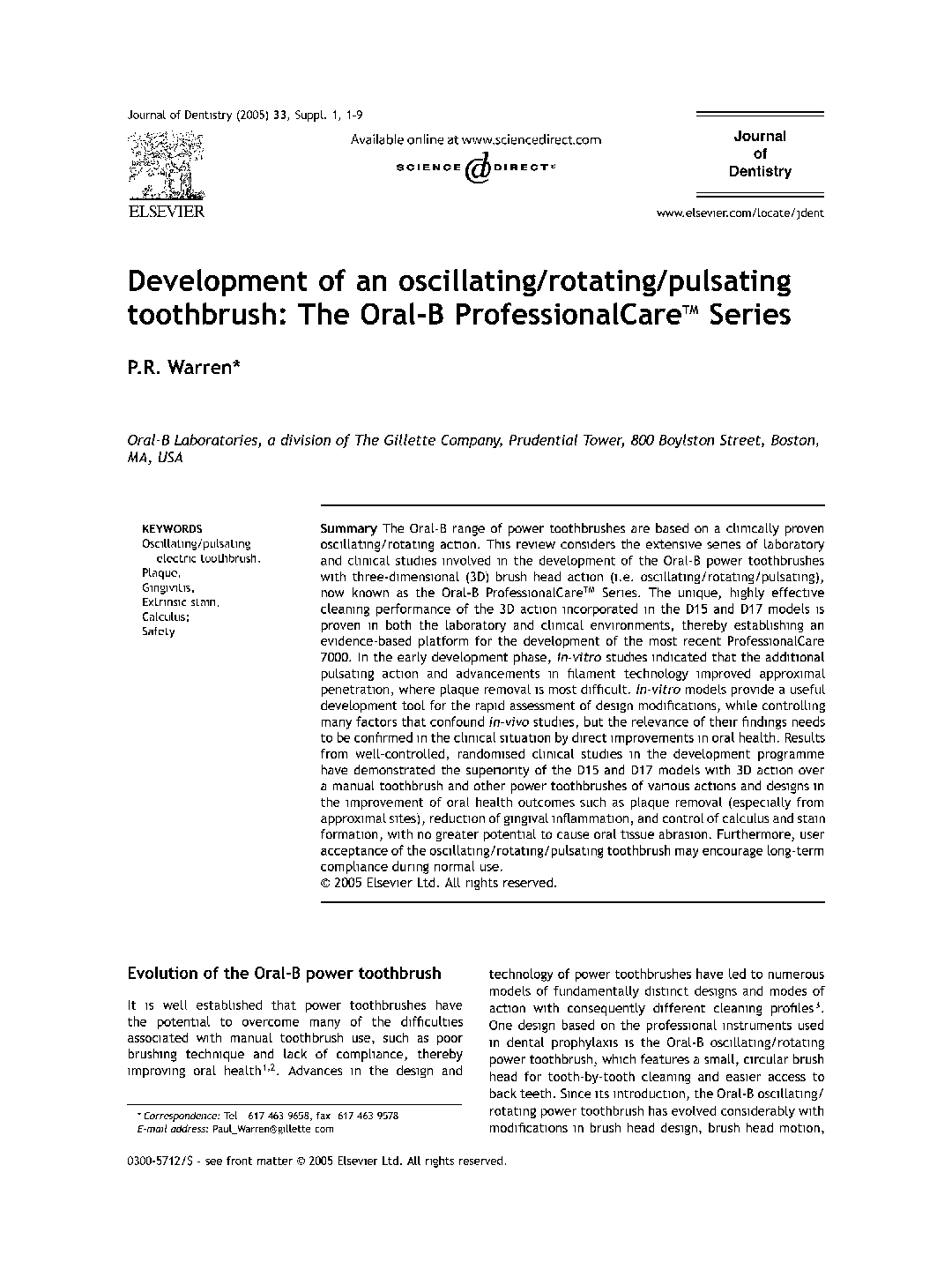| Article ID | Journal | Published Year | Pages | File Type |
|---|---|---|---|---|
| 9210949 | Journal of Dentistry | 2005 | 9 Pages |
Abstract
The Oral-B range of power toothbrushes are based on a clinically proven oscillating/rotating action. This review considers the extensive series of laboratory and clinical studies involved in the development of the Oral-B power toothbrushes with three-dimensional (3D) brush head action (i.e. oscillating/rotating/pulsating), now known as the Oral-B ProfessionalCare⢠Series. The unique, highly effective cleaning performance of the 3D action incorporated in the D15 and D17 models is proven in both the laboratory and clinical environments, thereby establishing an evidence-based platform for the development of the most recent ProfessionalCare 7000. In the early development phase, in-vitro studies indicated that the additional pulsating action and advancements in filament technology improved approximal penetration, where plaque removal is most difficult. In-vitro models provide a useful development tool for the rapid assessment of design modifications, while controlling many factors that confound in-vivo studies, but the relevance of their findings needs to be confirmed in the clinical situation by direct improvements in oral health. Results from well-controlled, randomised clinical studies in the development programme have demonstrated the superiority of the D15 and D17 models with 3D action over a manual toothbrush and other power toothbrushes of various actions and designs in the improvement of oral health outcomes such as plaque removal (especially from approximal sites), reduction of gingival inflammation, and control of calculus and stain formation, with no greater potential to cause oral tissue abrasion. Furthermore, user acceptance of the oscillating/rotating/pulsating toothbrush may encourage long-term compliance during normal use.
Related Topics
Health Sciences
Medicine and Dentistry
Dentistry, Oral Surgery and Medicine
Authors
P.R. Warren,
